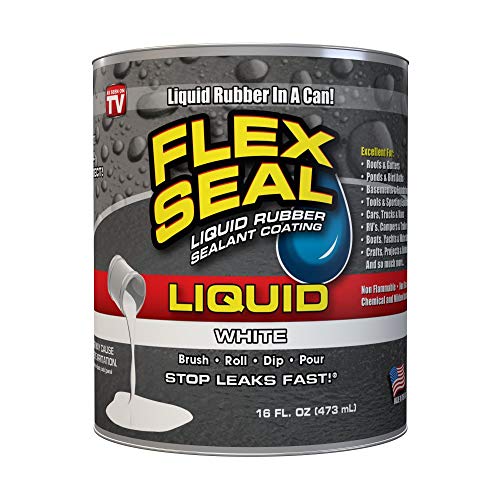An inflatable boat with holes or splits in the seam isn’t going to be very useful! Get your boat back in the water again when you learn how to seal it well so that it won’t leak anymore.
Many people wonder if they can use Flex Seal spray, Flex Seal in the can, or Flex Seal tape and similar projects to seal their boats. Here’s what you need to know so you can choose the best product for your inflatable boat and seal any leaks it might have.
Table of Contents
Does Flex Seal Work on Inflatables?
This is a complicated question and the answer is: Sometimes. Here’s how it breaks down.
Flex Seal Spray
Your mileage may vary with Flex Seal spray. Some people report that this product worked to fix small holes, but few have had success using it on larger punctures or ripped seams.
Flex Seal in a Can
This is similar to the product discussed above. While the spray is less messy, there is more of this product in each can, so you can give it multiple tries or layers to try and seal your hole. It is more successful at sealing smaller holes than larger ones.
Flex Seal Tape
If you need to seal your boat in a hurry and the hole is not too large, Flex Seal tape might do the job for you. However, don’t expect it to last. With repeated inflations and deflations of your boat, the tape can crack. Over time, the corners may begin to peel off, too. Overall, this is an option for emergency sealing situations but is not a great long-term choice.
Can Flex Seal Stop Air Leaks?

Flex Seal can stop air leaks, but whether it will do so on your particular boat depends on a few factors. These are:
- The size of the holes on your boat. Flex Seal is made to seal pinprick holes, but it will not fill large puncture holes or split seams that are leaking air.
- Exposure to water. If your boat is exposed to water before the Flex Seal gets completely dry, it will not hold properly.
- The type of Flex Seal you’re using. The tape might help in a crisis but it is not a long-term solution to an air leak on a boat.
- Inflation and deflation during drying. If you can, deflate your tubes and then inflate them to 50% several times during the process. This gets rid of any extra solvent fumes inside your tubes, which can do damage later.
Under these circumstances, Flex Seal spray and in the can could stop your air leaks. However, some boaters report that it did not do so, even under optimal circumstances.
How Do You Seal an Inflatable Boat with Flex Seal?

If you want to try to seal your boat with a Flex Seal product, the company recommends purchasing their Raft Sealant Kit. This two-part sealant is designed to work on Hypalon, PVC, neoprene, EPDM, and more.
Here’s how you use it:
- Make sure you are working in good conditions. Look for good ventilation with an ambient temperature of at least 60 degrees. Wear a respirator and use nitrile gloves. Ensure that the tubes are dry on both the inside and outside.
- Mix equal parts of the containers labeled “Part A” and “Part B.”
- Deflate the tube you’re going to fix. Remove the fill valve on the tube and pour in the desired amount of the mixed Flex Seal product. If possible, don’t get the product on the inner valve piece. If you do, though, don’t worry because it should peel off later.
- Put the valve back onto the tube and reinflate it.
- Rock the tube back and forth to distribute the Flex Seal where you need it. Deflate the tube, then knead it gently to distribute the Flex Seal where you need it. You should be able to feel the tube sliding wherever there is product. Make sure to put extra product where it is needed most.
- Inflate the tube halfway. Make sure that it will be in temperatures of at least 60 degrees for 24 hours. Deflate and reinflate the tube several times to get rid of solvent fumes.
- Do not allow the tube to collapse fully until Flex Seal is set, or it could glue the tube together.
- If there are still holes in the tube after the product has set for 24 hours, try reapplying the product one more time.
Conclusion
Your mileage may vary when using Flex Seal products to seal air leaks on your boat. If you choose to try them, make sure you choose the version that sprays or the one in the can. Follow the directions above to give it the best chance of working.
If Flex Seal doesn’t work, try an adhesive designed for the material your inflatable is made from. Follow directions on the product, then enjoy getting back out on the water again!

I created this site to help people – to help you – with your boat problems. Instead of helping one person at a time, I want this website to be the “one-stop-shop” for everyone’s boating concerns. Read more.




